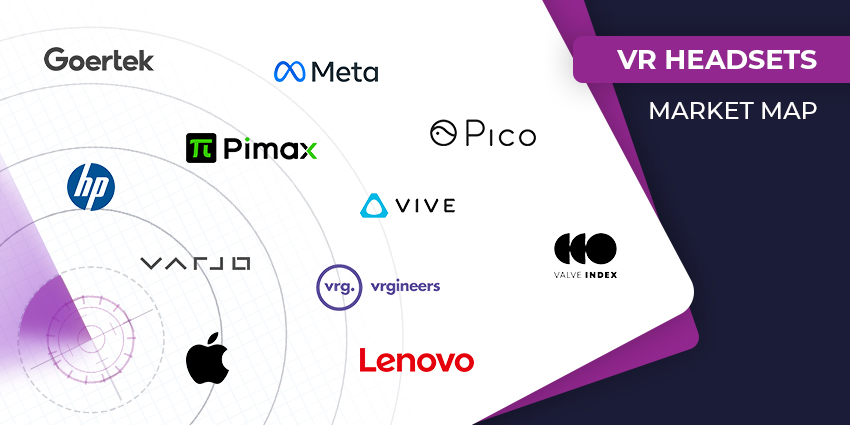The advertising landscape has always been a fast-moving, and competitive space. For years, companies in every industry have been competing to grab the attention of their target audience as effectively as possible, in a landscape where consumers are becoming less interested in “traditional” marketing campaigns.
XR, or Extended Reality, with its ability to immerse users in a new environment, or enhance their existing landscape with new information, presents a powerful opportunity for promotion. Through virtual, augmented, and mixed reality, companies can build deeper relationships with their target audience, and set themselves apart from the competition.
Here’s how you can build a use case for XR in your business.
Step 1: Look at the Competition
Often, marketing, and promotional companies spend a lot of time conducting “competitor analysis” reports and analytics, to understand how they can stand out compared to other companies in the same ecosystem. These days, you may have begun to notice a larger number of companies getting involved with XR solutions, as this form of advertising becomes more accessible.
Increasingly, it’s becoming more affordable for businesses to invest in VR pop-up shop-style promotional efforts to help generate attention for their brands. Additionally, there are a number of AR development kits and platforms available to access in today’s transformational world.
If your assessment of your competition shows you’re already falling behind other companies capable of offering more powerful experiences to your audience, now might be the time to start planning how you can catch up. Remember, the key is to go one step ahead of what the competition can offer. Don’t just create the same AR furniture app where customers can place products from your catalogue in their homes. Ask yourself how you can make the experience special.
For instance, can you allow your customers to customise the furniture they want to showcase when they see it through the app.
Step 2: Think About Brand Reach
We’re living in an increasingly global landscape for modern brands. Many companies who would have sold in a specific local environment before will now be looking into opportunities to expand through third-party logistics and fulfilment relationships, opening the door for accelerated growth. However, the further your company expands, the more you’ll need to innovate with the way you reach and connect with your target audience.
XR experiences can help you to reach both local and global customers on a more emotional and significant level. For instance, you could create an AR app that anyone in the world can download to try on a makeup item or piece of clothing from a distance. This makes it easier for customers not close to a local store to still shop with your brand.
Providing this kind of informative and educational experience to your audience also reduces the risk of a range of other issues. For instance, you’re less likely to have customers sending products back to your store because they’ve decided they don’t like the product in-person.
Step 3: Highlight Opportunities for Deeper Insights
The more information you collect about your target audience in today’s ever-changing advertising landscape, the better. Customer trends are constantly changing, and the marketing campaigns which might have spoken to your audience five years ago won’t be the ones that make an impact today.
XR solutions offer a new way to interact with customers and gain additional insights into their preferences. Just like other marketing tools, XR solutions can come with analytics built-in to help you understand things like which products your customers like best, or when customers are most likely to get online and start shopping with your brand.
Some programmatic advertising companies and brands invested in the future of XR advertising are also beginning to look at other ways of collecting information from things like eye-tracking technology. This technology might make it easier to determine how a customer’s attention is drawn to certain products more than others.
Step 4: Prioritise the Customer Experience
The growth of an increasingly complex consumer landscape has prompted companies to think more carefully about the relationships built with their audience throughout the entire buyer journey. Rather than thinking of the marketing environment as separate to the sales and aftercare landscape, companies need to think about how they can enhance the entire customer journey.
Implementing XR in the initial “awareness” and “discovery” stages of the marketing journey can be an excellent way to give customers more meaningful and educational experiences. These experiences can help customers to make better decisions about what they want to buy, even if they can’t visit a store and look at products in-person.
There are plenty of fantastic examples of companies already implementing try-before-you-buy advertising experiences into their customer purchasing journey with simple AR apps. However, this is just the start of what’s possible. Companies could also allow customers to test different versions of a product in VR, and customise their items with mixed reality tools.
Step 5: Explore The Opportunity for Creativity
Excellent marketing is often about thinking “outside of the box”. The most amazing promotional experiences don’t feel like advertisements. Instead, they should feel like a powerful interaction between a business and their customers. Unfortunately, it can be difficult for today’s brands to constantly come up with new and improved interactions for their audience.
With XR solutions, it’s possible to unlock new levels of creativity, by exploring different kinds of marketing opportunities in a completely flexible environment. Companies can also facilitate collaboration between different members of staff and contractors from all over the globe.
Even partnering with other media publications, influencers, and industry names on a marketing strategy can become easier with access to an XR environment where people can collaborate more effectively in real-time.
Step 6: Look to the Future
For a lot of marketing companies and promotional professionals looking at XR today, this technology represents not just an opportunity to keep up with the competition right now, but a chance to future-proof their campaigns for the future. Increasingly, we’re seeing more interactive and immersive advertising experiences appear as companies try to connect with distributed customers worldwide.
Hybrid experiences connecting the virtual and real world are becoming more common, with QR code experiences built into stores which allow consumers to tap into AR with their phone when they’re on the move. At the same time, the Metaverse is forcing us to rethink what relationships between companies and customers might look like in the future.
As new technologies continue to emerge to make XR more accessible, like cheaper headsets and 5G connectivity, and developer kits simplify the creation of apps, it seems the demand for XR in advertising will only continue to grow. Failing to get involved could mean you’re unprepared for the emerging future of promotion.







